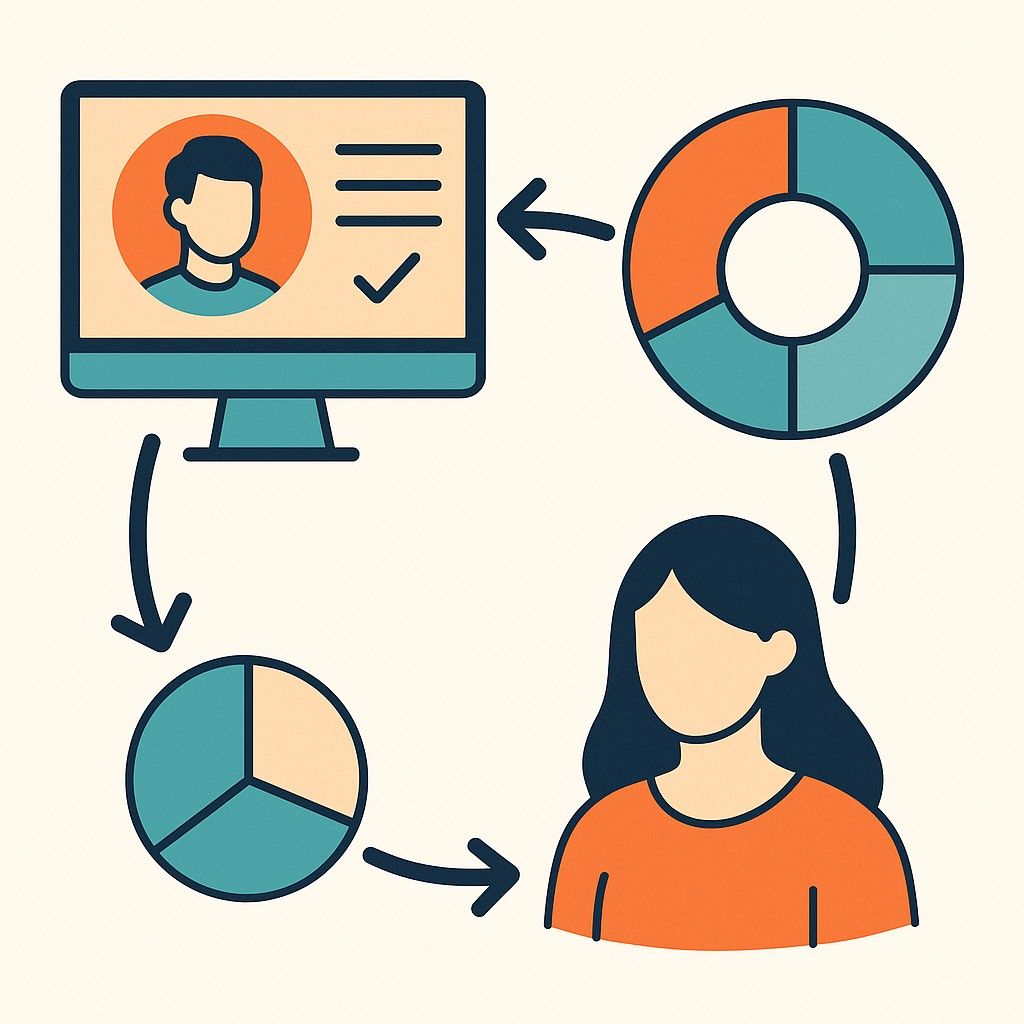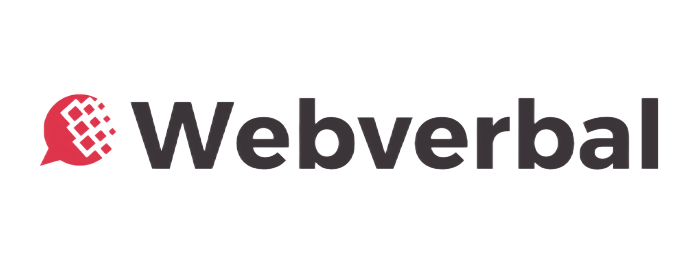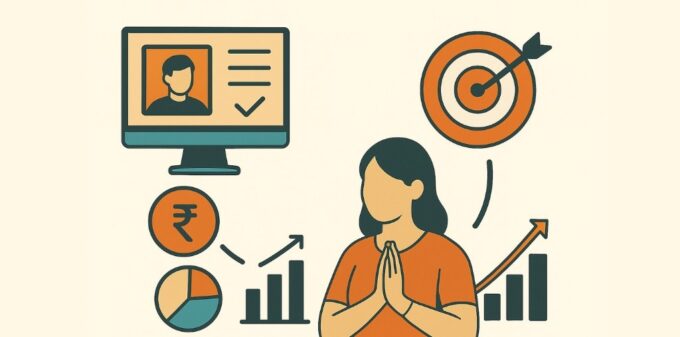Table Of Content
- Introduction
- Step 1: Begin with Clarity — Who Are You Truly Serving?
- Step 2: Map Your Customer Journey Like a Battlefield
- Step 3: Choose Your Growth Channels Wisely — The Bow and the Arrow
- The Three Arrows of Growth
- Step 4: Build Your Experiment System — The Founder’s Lab
- Step 5: Connect CAC to Lifetime Value — The Real Dharma of Growth
- Ways to Increase LTV
- Step 6: Weave Storytelling into Your Acquisition System
- Step 7: Build a System, Not Dependency
- Step 8: Measure, Reflect, and Refine — The Founder’s Tapasya
- Conclusion — Acquisition as a Living Practice
- FAQ
Introduction
“Strategy without understanding human desire is like sailing without the wind.”
— Kautilya, Arthashastra
When I first began building Classystreet, every rupee I spent on Facebook felt like lighting a diya in a storm. Some caught fire and brought warmth; most disappeared in the wind. It took me years to understand that customer acquisition isn’t about pouring money into ads—it’s about aligning with human behaviour.
The battlefield has changed, but the war is the same. Every D2C founder in India today faces the same question:
“How do I attract, convert, and retain customers without bleeding cash?”
This guide is not a mechanical step-by-step funnel checklist. It’s a strategic manual built from lived founder experience, blending modern data-driven systems with timeless strategic thinking inspired by Chanakya Niti and Mahabharata.
Let’s build your customer acquisition dharma—one that’s profitable, story-led, and built to last.
Step 1: Begin with Clarity — Who Are You Truly Serving?

“When Arjuna aimed his bow, he saw only the bird’s eye.”
Every acquisition strategy begins with this clarity.
You cannot win the market you cannot define.
Instead of asking “Who can buy this?”, ask “Who must buy this?”
A D2C brand’s Ideal Customer Profile (ICP) is not just demographic—it’s psychographic.
Ask yourself:
- What motivates your buyer when they wake up in the morning?
- What emotion do they associate with your product?
- What problem are they silently trying to solve?
When I audited over a hundred early-stage founders through MybrandPitch sessions, I found a pattern:
80% of their marketing problems were not about traffic—they were about unclear audience identity.
Example:
A handloom saree brand doesn’t sell fabric. It sells belonging, nostalgia, and the confidence of being rooted in tradition while embracing modernity.
That’s not a demographic. That’s a human story.
Pro tip: Use tools like Google Analytics 4, Meta Audience Insights, and even direct WhatsApp feedback from top customers to define your “Arjuna’s Eye” audience.
Step 2: Map Your Customer Journey Like a Battlefield
“Victory begins with reconnaissance.” — Chanakya
The great strategist Kautilya taught that no kingdom could win without studying the terrain.
For your D2C brand, that terrain is your customer journey—from first touch to final purchase.
Visualize it like a living map:
| Stage | Customer Mindset | Your Brand’s Role |
|---|---|---|
| Discovery | “I’ve never heard of you.” | Ads, PR, social content |
| Consideration | “Should I trust this?” | Reviews, storytelling, comparison pages |
| Decision | “Is it worth my money?” | Offers, checkout UX, testimonials |
| Retention | “Was this worth it?” | WhatsApp follow-ups, loyalty programs |
| Advocacy | “I’ll tell my friends.” | Referrals, community, UGC |
The brands that dominate today—be it Sugar Cosmetics, The Whole Truth, or BluSmart—are not simply marketing well. They understand every step of the buyer’s internal narrative.
When you map that journey, you stop shouting and start guiding.
Step 3: Choose Your Growth Channels Wisely — The Bow and the Arrow
“Even the best warrior is useless without the right weapon.” — Mahabharata
In D2C marketing, your channel strategy is your weapon choice.
Every founder faces the temptation of being everywhere—Instagram, YouTube, Meta Ads, Google, influencers, SEO, email, WhatsApp.
But real mastery comes from depth, not breadth.
According to a recent McKinsey & Company report on India’s digital consumers, brands that focus on one or two high-ROI channels outperform multi-channel spenders by nearly 30% in long-term retention and profitability.
The Three Arrows of Growth:
- Paid Media — Meta Ads, Google Ads, Influencers
- Fastest reach, but fragile. Great for testing and scale.
- Owned Media — Email, WhatsApp, Blog, Community
- Your long-term moat. Audience you control.
- Earned Media — PR, UGC, Collaborations
- The social proof engine. Harder to predict, easier to trust.
For most early D2C brands, the magic formula is:
1 paid + 1 organic + 1 retention channel.
Example:
A beauty brand I advised reduced ad spend by 30% simply by focusing on Meta Ads (paid), SEO blogs (organic), and WhatsApp retention (owned). Their CAC dropped while LTV rose by 40%.
So choose your bow carefully—and draw only when you can hit the target.
Step 4: Build Your Experiment System — The Founder’s Lab
“A wise ruler tests every bridge before marching his army.” — Arthashastra
Acquisition isn’t a static plan—it’s a living laboratory.
Set up a 90-day experiment calendar where every hypothesis is tested systematically.
Example Framework:
- Hypothesis: Adding WhatsApp CTA will reduce cart abandonment by 10%.
- Action: Implement and run for two weeks.
- Result: Measure with GA4 and Meta Dashboard.
- Decision: Scale or discard.
This rhythm builds compounding intelligence into your marketing system.
You don’t just run campaigns—you evolve them.
When we ran small WhatsApp remarketing tests on Classystreet, conversion rose 14% within 10 days—without a single rupee increase in ad spend.
That’s the power of measured curiosity.
Step 5: Connect CAC to Lifetime Value — The Real Dharma of Growth
“Wealth gained without discipline is soon lost.” — Chanakya Niti
Every acquisition plan must obey one sacred law:
LTV ≥ 3× CAC
If your average customer spends ₹1500 over their lifetime, you cannot spend more than ₹500 to acquire them.
This is the dharma of sustainable D2C growth.
Chasing top-line vanity metrics without unit economics is like building a palace on sand.
Ways to Increase LTV:
- Loyalty programs and repeat discounts
- Founder’s note emails (human connection drives retention)
- Subscription bundles
- WhatsApp drip campaigns for reorders
D2C brands like The Man Company or BoAt thrive not just on new buyers but returning believers.
Your real moat is retention.
Step 6: Weave Storytelling into Your Acquisition System
“People don’t buy products. They buy meaning.”
When every competitor offers the same 10% discount, what differentiates you is storytelling.
Your story isn’t a paragraph on the “About Us” page.
It’s how every ad, image, and unboxing moment answers one subtle question:
Why do you exist?
Here’s the Brand Dharma Framework for storytelling-led acquisition:
- Purpose: What world are you trying to build?
- Promise: What experience do you guarantee?
- Proof: What evidence backs your promise?
- Presence: How does your brand show up daily across touchpoints?
Example:
A small organic tea brand began sharing behind-the-scenes stories from Assam farmers. Engagement tripled, and repeat orders rose 25% in two months.
Because in Bharat, trust is built not by perfection—but by transparency.
Every marketing decision must begin with understanding Indian consumers — their motivations are shifting faster than global playbooks can keep up.
Step 7: Build a System, Not Dependency
Acquisition chaos ends when systems begin.
If every campaign depends on you, you haven’t built a business—you’ve built a treadmill.
Automate the repeatable.
Use:
- Klaviyo for behaviour-based emails
- Zoho CRM or HubSpot for pipeline tracking
- Notion for experiment documentation
Your goal: to replace constant reaction with calm repetition.
Because the true mark of a mature founder isn’t how many campaigns they run—it’s how predictably they grow.
Step 8: Measure, Reflect, and Refine — The Founder’s Tapasya
“Tapasya is not renunciation; it’s repetition with awareness.”
At the end of every month, perform a founder’s reflection ritual.
Ask:
- What worked better than expected?
- What drained more money than it should have?
- What surprised me about my customers this month?
Use these insights to adjust—not rebuild—your strategy.
Because acquisition isn’t a battle you win once; it’s a rhythm you master.
When I look back at 11 years in D2C, I’ve realised—growth is not a sprint of campaigns; it’s the stillness between them that makes the difference.
Conclusion — Acquisition as a Living Practice
“The wise ruler expands not by conquest but by understanding.” — Kautilya
So does the modern founder.
Your customer acquisition strategy isn’t a formula—it’s a philosophy.
It’s about seeing your customers not as clicks, but as companions on a shared journey.
When you approach growth from understanding, not aggression, your marketing becomes magnetic.
Because the future of D2C in Bharat will belong not to the loudest brand, but to the one that listens best.
Next Read: How to Build an Email List That Converts for Your Shopify Store →
FAQ
It’s a repeatable, measurable system for attracting and converting customers profitably—by combining storytelling, data, and channel strategy.
A hybrid of Meta Ads (for discovery) and WhatsApp + Email (for retention) performs best for Indian brands targeting Tier 1–3 audiences.
Every 30 days. Treat your acquisition strategy as a living document—review, refine, and realign based on what your data and customers tell you.




